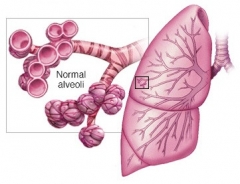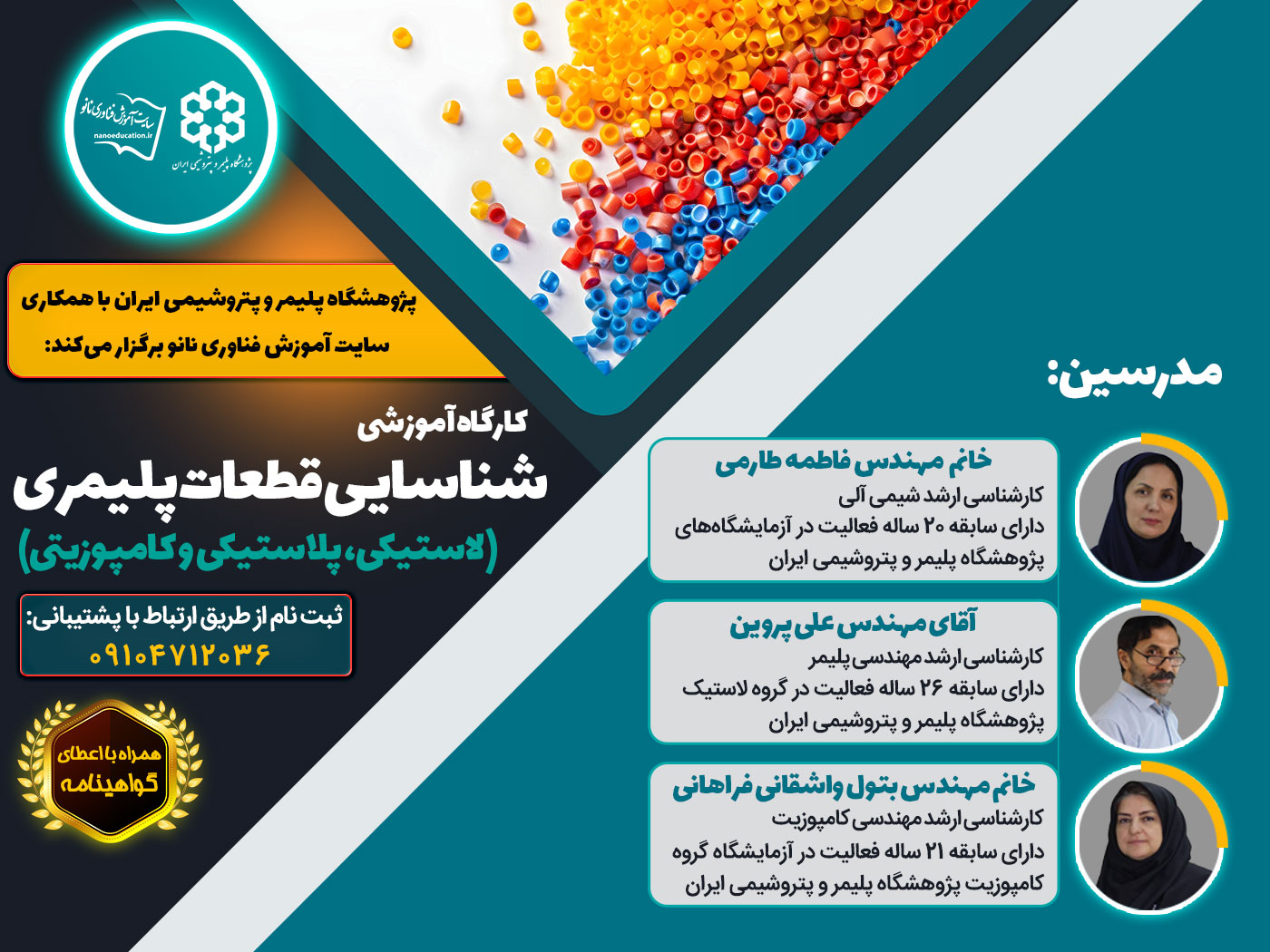سمیّت نانوذرات به دنبال مواجهه تنفسی و بررسی سازوکارهای احتمالی
سمیّت نانوذرات به دنبال مواجهه تنفسی و بررسی سازوکارهای احتمالی
اگر چه انسانها در مراحل تکاملی خود همیشه در معرض مواجهه با نانوذرات موجود در هوا (nm100>) بودهاند امّا در طی چند قرن اخیر این مواجهه بهطرز چشمگیری به دلیل افزایش منابع انسانزاد، فزونی یافته است. سرعت بالای توسعه فناوری نانو سبب شده تا نانومواد مهندسیشده نیز به یکی دیگر از منابع مواجهه با نانومواد تبدیل شوند. پژوهشهای انجامشده، ارتباط بین مواجهه با ذرات موجود در هوای محیط و عوارض سوء بر سلامتی، افزایش ناتوانیها و مرگ و میر را به اثبات رسانیدهاند، لذا یکی از نگرانیهای مهم، حفاظت از سامانه تنفسی انسان در مواجهه با ذرات هوابرد و نیز ذرات بسیارریز معلق در هوا است. ساختارهای نانو به احتمال زیاد سمیتر از مواد مشابه همان ماده در اندازه معمولی بوده و میتوانند به اعماق ریه وارد شوند. اندازه بسیار کوچک نانوذرات و سطح بزرگ آن احتمالاً نقش مهمی در سمیّت نانوذرات ایفا میکند. در این مقاله، سازوکارهای احتمالی سمیّت نانوذرات به دنبال مواجهه استنشاقی و ضرورت اطلاع از خطرات بالقوّه آن مورد بررسی قرار گرفته است.
این مقاله شامل سرفصلهای زیر است:
1- مقدمه
2- فناوری نانو
3- توکسیکولوژی تنفسی نانوذرات
4- ویژگیهای ذرات
5- تنفس هواسُلها
6- سازوکارهای نشست ذرات در دستگاه تنفسی
7-اندازهگیری میزان نشست ذرات در دستگاه تنفسی
8- سازوکارهای احتمالی در سمیّت نانوذرات
9- نتیجهگیری
این مقاله شامل سرفصلهای زیر است:
1- مقدمه
2- فناوری نانو
3- توکسیکولوژی تنفسی نانوذرات
4- ویژگیهای ذرات
5- تنفس هواسُلها
6- سازوکارهای نشست ذرات در دستگاه تنفسی
7-اندازهگیری میزان نشست ذرات در دستگاه تنفسی
8- سازوکارهای احتمالی در سمیّت نانوذرات
9- نتیجهگیری
لطفا برای مشاهده متن کامل مقاله ابتدا وارد سایت شوید
منابـــع و مراجــــع
۱ - Shahnaz Bakand, Amanda Hayes. “Nanoparticles: a review of particle toxicology following inhalation exposure”, Inhal Toxicol, 24(2), 125–135, (2012).
۲ - Borm P, Robbins JA, Haubold D, Kuhlbusch S, Fissan T, Donaldson H, Schins KR, Stone V, Kreyling W, Lademann J, Krutmann J, Warheit D, Oberdorster E. “The potential risks of nanomarerials: a review carried out for ECETOC”, Part Fibre Toxicol, 3, p.1–35, (2006).
۳ - Song Y, Li X, Du X. “Exposure to nanoparticles is related to pleural effusion, pulmonary fibrosisgranuloma”, Eur Respir J, 34(3), p.559–567, (2009).
۴ - Mayo Clinic Staff. "Definition [of pulmonary fibrosis]". Mayo Foundation for Medical EducationResearch. Retrieved 26 July (2014), available at: http://www.mayoclinic.org/diseases-conditions/pulmonary-fibrosis/home/ovc-20211752
۵ - سازمان ملّی استاندارد، استاندارد شمارۀ 21206 ، فناوری نانو- راهنمای مشخصهیابی فیزیکوشیمیایی مواد نانومقیاس مهندسیشده برای ارزیابی توکسیکولوژیک؛ سال انتشار: 1395.
۶ - Nancy A. Monteiro-Riviere, C. Lang Tran. “Nanotoxicology: characterization, dosinghealth effects”, USA: CRC Press Inc, 14, p.225–236, (2007).
۷ - Warheit DB, “Nanoparticles health impacts”, Mater Today, 7(2), p.32–35, (2004).
۸ - https://en.wikipedia.org/wiki/Dispersity
۹ - Drobne D. “Nanotoxicology for safesustainable nanotechnology”, Arh Hig Rada Toksikol, 58(4), p.471–478, (2007).
۱۰ - Oberdörster G, Oberdörster E, Oberdörster J. “Nanotoxicology: an emerging discipline evolving studies of ultrafine particles”, Environ Health Perspect, 113(7), p.823–839, (2005).
۱۱ - Maynard AD, Baron PA, Foley M, et al, “Exposure to carbon nanotube material: aerosol release during the handling of unrefined single-walled carbon nanotube material”, J Toxicol Environ Health, Part A, 67(1), p.87–107, (2004).
۱۲ - Seaton A. “Nanotechnologythe occupational physician”, Occup Med (Lond), 56(5), p.312–316, (2006).
۱۳ - Stine KE, Brown TM. “Principles of Toxicology”, 2th ed, USA (Boca Raton): CRC Press, p.143-163 (1996).
۱۴ - David A, Wagner GR. “Respiratory system. In: Encyclopaedia of occupational healthsafety”, 4th ed, Geneva: International Labour Office, 10.1–10.7, (1998).
۱۵ - Schlesinger RB. “Interaction of gaseousparticulate pollutants in the respiratory tract: mechanismsmodulators”, Toxicology, 105(2–3), p.315–325, (1995).
۱۶ - Dechsakulthorn F, Hayes A, Bakand S, Joeng L, Winder C. “In vitro cytotoxicity of ed nanoparticles using human skin fibroblasts”, AATEX, 14, p.397–400, (2008).
۱۷ - Bakand S, Winder C, Khalil C, Hayes A. “Toxicity assessment of industrial chemicalsairborne contaminants: transition in vivo to in vitro test methods: a review”, Inhal Toxicol, 17(13), p.775–787, (2005).
۱۸ - Blank F, Gehr P, Rutishauser RR. “In vitro human lung cell culture models to study the toxic potential of nanoparticles. In:Nanotoxicity: in vivoin vitro models to health risks”, UK: John Wily & Sons Ltd, p.379–395, (2009).
۱۹ - Asgharian B, Wood R, Schlesinger RB. “Empirical modeling of particle deposition in the alveolar region of the lungs: a basis for interspecies extrapolation”, Fundam Appl Toxicol, 27(2), p.232–238, (1995).
۲۰ - Rozman KK, Klaassen CD. “Absorption, distributionexcretion of toxicants. In: CasarettDoull’s Toxicology: the Basic Science of Poisons”, 6th ed, New York: McGraw-Hill, p.105–132, (2001).
۲۱ - Mublfeld C, Gebr P, Rutishauser BR. “Translocationcellular entering mechanisms of nanoparticles in the respiratory tract”, Swiss Med Wkly 138(27–28), p.387–391, (2008).
۲۲ - Siegmann K, Scherrer L, Siegmann HC. “Physicalchemical properties of airborne nanoscale particleshow to measure the impact on human health”, J Mol Struct (Theochem), 458(1–2), p.191–201, (1999).
۲۳ - Asgharian B, Hofmann W, Miller FJ. “Dosimetry of particles in humans: children to adults. In: Toxicology of the Lung”, 4th ed, USA (Boca Raton): Taylor & Francis, p.151–195, (2006).
۲۴ - Barile F. “Principles of toxicology testing”, USA (Boca Raton): CRC Press, Taylor & Francis Group, p.147–172, (2008).
۲۵ - Rückerl R, Schneider A, Breitner S, Cyrys J, Peters A. “Health effects of particulate air pollution: A review of epidemiological evidence”, Inhal Toxicol, 23(10), p.555–592, (2011).
۲۶ - Gojova A, Guo B, Kota RS, Rutledge JC, Kennedy IM, Barakat AI. “Induction of inflammation in vascular endothelial cells by metal oxide nanoparticles: effect of particle composition”, Environ Health Perspect, 115(3), p.403–409, (2007).
۲۷ - Donaldson K, Stone V, Gilmour PS, Brown DM, Macnee W. “Ultrafine particles: mechanisms of lung injury”, Phil Trans R Soc Lond A, 358(1775), p.2741–2749. )2000(.








